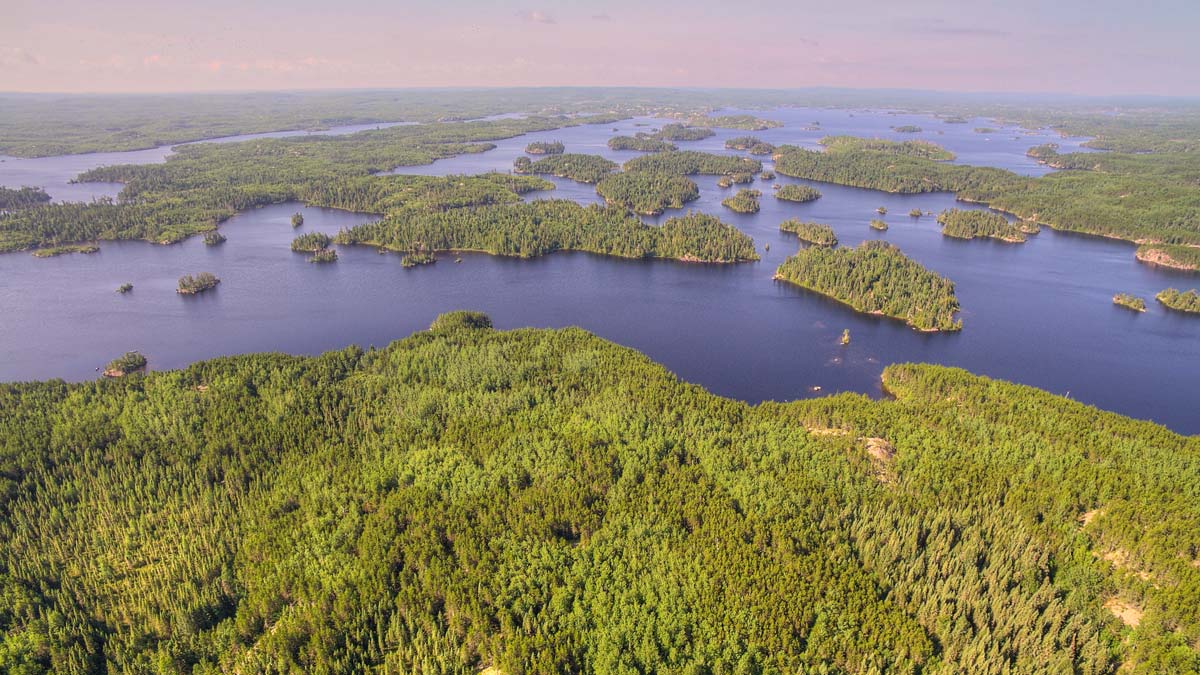Honor your friends and loved ones with the gift of trees to one of our nation’s forests. Planting trees in a forest of need will help heal and protect the land. You can help restore the forest to a beautiful, healthy place for animals and people to enjoy.

Superior National Forest
Superior National Forest encompasses a diverse ecosystem that is home to a variety of wildlife including threatened, endangered, and sensitive species. Restoration efforts are needed to help create a diverse mix of tree species and stand structures to provide valuable habitat, improved watershed functionality, and overall forest health.
The Need for Trees
This National Forest is facing real challenges due to a decline in conifer and birch trees. This loss degrades forest health, wildlife habitat potential, and water quality as well as the economic and ecological benefits the forest provides. The goal is to create a diverse forest environment that is more representative of its natural range.
Your generous support can make a real impact on Superior National Forest through tree planting. Reforestation efforts improve tree species diversity and overall forest health, improve area watersheds, and provide critical habitat for threatened and endangered wildlife.

Bootleg Fire Recovery in Oregon
The Klamath Basin encompasses 12,000 square miles of southern Oregon and northern California – home to wildlife refuges, preserves, National Forest lands, private lands, and a network of lakes and rivers, including the Klamath River. This watershed area hosts an array of terrestrial and aquatic biodiversity, supports a population of more than 100,000 residents, and holds historical and cultural significance for Indigenous communities.
The Need for Trees
In 2021, the Bootleg Fire devastated 413,765 acres of forest in southern Oregon, including the Klamath Basin. Given the importance of the forest in this area, it is in great need of restoration.
With your generous support, evergreen trees can be planted to help rebuild the tree canopy lost in the fire. Replanting efforts here will provide a home for bald eagles, big game, and small mammals while also playing a critical role in restoring water quality in the Klamath River.

Benefits of Planting Trees in These Areas
- The roots of these young trees will help hold the soil in place, so it doesn’t wash away with heavy rains or melting snow.
- The seedlings will help keep ash from the fire from washing into rivers and streams, where it can harm fish and people.
- As they grow, the trees will provide homes and food for animals.
- Newly planted trees will keep the air fresh and clean.
- Planting trees today will help make the forest as beautiful as it was before the fire.
- Replanting trees will make hiking, camping, fishing and other fun activities in the forest more enjoyable.
About Forest Fires
Not all fires in the forest are bad. Light, periodic burning clears out buildups of downed trees and other “fuels,” creating browse for elk and deer, thinning out undesirable competition so that older, more fire-resistant species can thrive, and providing other services in a healthy ecosystem.
But often fuels have built up over too many decades. When a large wildfire rages through a forest, it can generate temperatures in excess of 2,000 degrees, the per acre equivalent to an atomic explosion. In the wake of a fire like this, only blackened skeletons of trees remain. Trees both large and small are gone, nutrients stored in leaves and branches are volatilized, seed sources are burned up, soil binding roots deteriorate, and even soil organisms are destroyed. The land is left virtually lifeless.
The challenge of managing wildland fire in the United States has dramatically increased in recent years. Large wildfires now threaten millions of acres of public and private land, particularly in areas where vegetation patterns have been altered by development, land-use practices, and aggressive fire suppression.